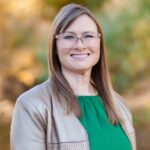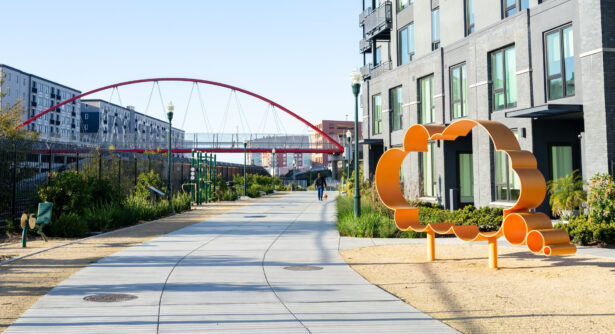
Vision to Action: Community-Led Reuse in Plummer, Idaho
It’s a hot Saturday in the middle of July in Plummer, Idaho, an hour south of Spokane. It feels like most of the city is at Plummer Days, enjoying live music, vendors, food trucks, bounce houses for the kids and a parade featuring the fire department, local churches and Smokey the Bear. Plummer Days is an annual celebration of the founding of the City of Plummer in 1910. It’s an opportunity to celebrate community and think critically about advancing environmental justice.
 The Mayor of Plummer joins the Coeur d’Alene Tribe’s environmental programs team at a booth where community members can weigh in on reuse options for the Pole Yard, a large former brownfield in the center of town. Residents apply sticky dots to a large poster with different reuse options such as housing or recreation, and a scale from 1-4 regarding how much the person wants, or doesn’t want, a particular end use. As the bouncy houses deflate and Smokey the Bear leaves, the poster is covered with dots that clearly visualize what people want to see at the Pole Yard.
The Mayor of Plummer joins the Coeur d’Alene Tribe’s environmental programs team at a booth where community members can weigh in on reuse options for the Pole Yard, a large former brownfield in the center of town. Residents apply sticky dots to a large poster with different reuse options such as housing or recreation, and a scale from 1-4 regarding how much the person wants, or doesn’t want, a particular end use. As the bouncy houses deflate and Smokey the Bear leaves, the poster is covered with dots that clearly visualize what people want to see at the Pole Yard.
Plummer Days is the type of small town celebration you see all across the country, but it is also a time to remember, and grieve, the city’s colonial history. The City was established on land the federal government took from the Coeur d’Alene Tribe. Today, Plummer is home to about 1,100 people, making it the largest city within the Coeur d’Alene reservation.
Tribe and City are moving forward together to realize a future for the Pole Yard that benefits all residents. Earlier in 2024, the entities were interested in applying for EPA Revitalization Funding and a Community Change Grant for the site. They needed to conduct community engagement and end use planning to be eligible for funding. CCLR provided Vision to Action services to meet these grant requirements and develop a plan the City and Tribe could follow to ensure the future envisioned for the site becomes a reality.
What is a Vision to Action
Vision to Action is an intensive form of technical assistance where CCLR’s revitalization experts work with you, your partners, and your community to develop a vision for your brownfield site. We then develop a plan with a clear path to transform brownfield sites. The four-step process includes: analyzing your community’s data to understand strengths and opportunities, visualizing a future by convening the community, strategizing priorities and next steps on a clear timeline, and taking action by following a straightforward implementation plan.
“CCLR set up a very rapid timeline, recognizing that there were a lot of opportunities for us to move quickly on implementation in the next few years if we could have rapid community engagement.” Said Laura Laumatia, Environmental Programs Manager for the Coeur d’Alene Tribe.
In Plummer, the process took about three months and included two community engagement events plus participation at Plummer Days. After consulting with project leaders and partners, community members were invited to envision a future for the 33-acre Pole Yard. Residents chose amenities they wanted at the site and where they thought those amenities should be located. CCLR consultant Norman Wright then took all the feedback to develop three alternatives for the site. Each alternative prioritized active recreation, open space, and road improvements, which emerged as the top needs during community engagement. The plans also had options for workforce development, housing, retail and community solar which were also popular with many members of the community.
During the second community engagement meeting, participants were provided with a summary of the results and the three alternative plans for the site. People were able to view the plans in detail, ask questions, provide feedback in the form of a paper survey, and select which alternative they most preferred. With all this information in hand, Norman developed the final Vision to Action report that detailed the community engagement, end use plans and next steps for the Pole Yard. Now the Tribe and City have a clear view of their next steps, and goals for short term and long term improvements to the Pole Yard site.
The plan was included in applications for EPA Revitalization funding and a Community Change Grant. “The community change grant program and many other grant programs are always highly competitive. To have this Vision to Action plan, and the process that went with it in Plummer puts them in a very competitive place.” says Norman Wright.
The Importance of Community Engagement
“Any time we’re using federal funds we want to make sure that that it’s what the community wants. We don’t want to do something with taxpayer funding that the community doesn’t support.” Says Margaret Olson, Brownfields Coordinator for EPA Region 10. “So activities like this Vision to Action Workshop really help get the community engaged. And we can make sure that this is what the community wants going forward.”
Brownfield sites are concentrated in lower income, minority communities. Engaging residents and ensuring a brownfield’s end use will benefit them, can: increase community support, reduce setbacks and challenges, and improve your grant eligibility. Beyond that, community-led planning ensures the community benefits from brownfield reuse, improving equity and environmental justice.
Collaborating with marginalized communities takes effort and understanding. “It’s hard to get time off work and a lot of times when we have these public meetings are when the community members need to be working.” Says Margaret. Scheduling community engagement events at times and locations convenient for residents; providing food, childcare and support costs; speaking to community groups and having a presence at community events; and ensuring your events are accessible ensures as many residents as possible can contribute to equitable planning.
Working with Tribal Entities

”How did you get your farm? How did you get your 100 acres? How did you get the Pole Yard? It was ours.” Says Lo Vina Louie, enrolled member and Natural Resources Education and Outreach Manager for the Coeur d’Alene Tribe. Once spanning millions of acres across present day Washington, Idaho and Montana, the Tribe’s land was reduced to 65,000 acres. “Being educated on what happened would be helpful. And not just having these walls up saying, ‘this is our land, this is our city.’ But having the ability to have understanding and compassion and empathy and, and to just be able to look at the true history of what happened.”
Bill Weems is the first (and only) enrolled Coeur d’Alene tribal member to serve as Mayor of Plummer. In 2012, Weems decided it was past time to tackle the Pole Yard site. He went to Tribal Council and invited the Tribe to join the City as a partner. With the assistance of EPA and Idaho DEQ, the City and Tribe were able to assess, clean up, and now complete reuse planning for the Pole Yard as partners. The two governments still have work to do to heal and move forward from past harms, but the Pole Yard redevelopment is a good step in the right direction.
Tribal entities should be approached early in the land reuse process and be given an opportunity to contribute and shape your brownfield reuse. Consult all bands and tribes that may have ancestral claims to your site as one tribe/band cannot speak for all. Recognize that Tribes are asked to provide input on many projects and may not have the capacity to work with you. When this happens, you should still include tribal community members in the planning process and inform the tribe/band on your progress, providing ample opportunity for empowerment.
Coeur d’Alene Tribe Climate Resilience Coordinator Ayanna James said “I think it’s really important to bring the community in early. Oftentimes, indigenous people and also just people of color or other marginalized communities are thought of as an afterthought or just used as the diversity checkbox.”
Building intentional partnerships will make reuse plans more equitable and chart a future where everyone feels invested in a project’s success.
How CCLR Helps with Brownfield Reuse Planning and Visioning
As the technical assistance provider to brownfield communities in EPA Regions 9 and 10, CCLR assists communities with a wide range of planning, visioning, and community engagement services. CCLR can: help you identify and prioritize your brownfields for redevelopment, facilitate community engagement events, and develop comprehensive and community-driven reuse plans. We follow the equitable land reuse principles we developed with Groundwork USA to ensure reuse planning is community-centered and advances equity and environmental justice.





